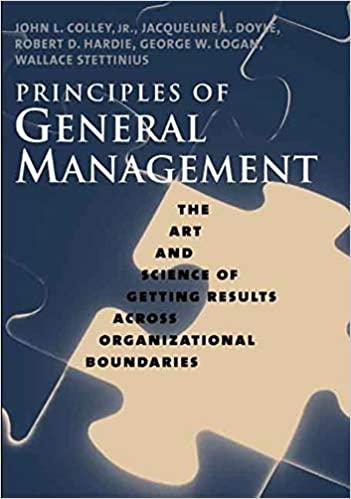Question
EffectiveLeadership Managers and leaders serve distinct yet complementary roles within organizations. Managers are primarily concerned with executing tasks and achieving objectives efficiently. They focus on
EffectiveLeadership
Managers and leaders serve distinct yet complementary roles within organizations. Managers are primarily concerned with executing tasks and achieving objectives efficiently. They focus on overseeing day-to-day operations, organizing resources, delegating responsibilities, and ensuring that work is completed according to set standards and schedules. Managers typically operate within existing structures and processes, emphasizing control, coordination, and optimization of resources to meet specific goals and targets.
On the other hand, leaders are more focused on inspiring and influencing people towards a shared vision or goal. They motivate and empower their team members, foster innovation and creativity, and guide them through change and uncertainty. Leaders often challenge the status quo, encourage personal and professional development, and cultivate a culture of trust, collaboration, and engagement. Unlike managers, leaders may not necessarily hold formal authority but can exert significant influence through their charisma, integrity, and ability to articulate a compelling vision.
While managers ensure that tasks are completed efficiently, leaders inspire and enable people to reach their full potential and drive organizational success. In essence, managers are administrators who maintain stability and control, while leaders are visionaries who inspire and catalyze change. However, effective leadership often requires a blend of managerial skills and leadership qualities to navigate complex challenges and lead teams towards sustainable growth and innovation.
In reference to the above statement, answer the followings:
Please answer in more detail and include examples write paragraph format. MUST 1000 WORD. Question 1 (a) With the trend of business organizations shifting their focus from management to leadership, analyze the business challenges organizations might face during this transition.
(b) Analyze two (2) strategies to overcome these challenges can be addressed effectively. Explain ways organizations can ensure that both management and leadership practices are not only recognized but also integrated seamlessly into their operations for sustained success.
(c) Analyze the impact of transformational leadership on business organizations' growth. Provide relevant example to support your analysis.
(d) Evaluate the challenges and opportunities associated with cross-cultural leadership in global organizations. Provide relevant example to support your evaluation.
Step by Step Solution
There are 3 Steps involved in it
Step: 1

Get Instant Access to Expert-Tailored Solutions
See step-by-step solutions with expert insights and AI powered tools for academic success
Step: 2

Step: 3

Ace Your Homework with AI
Get the answers you need in no time with our AI-driven, step-by-step assistance
Get Started


